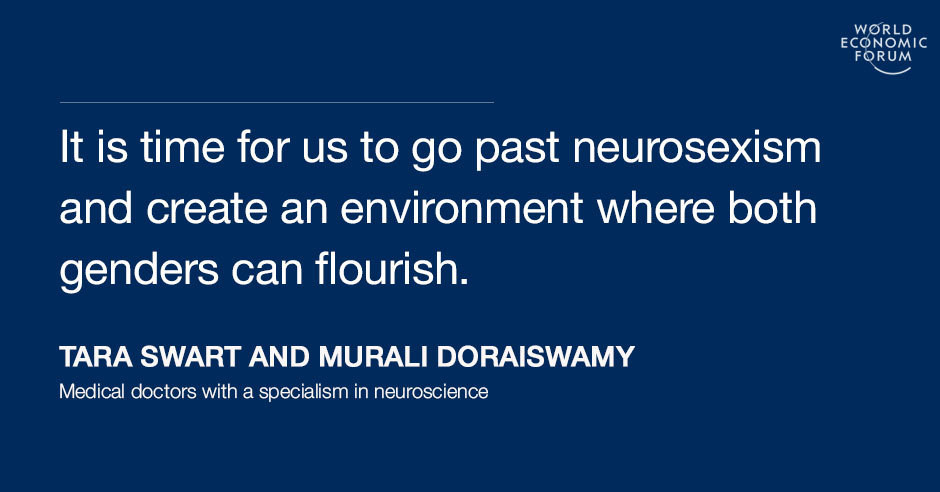Women are now occupying or vying for some of the most important positions across the world. President of the US, South Korea and Taiwan, Prime Minister of the UK, Bangladesh, Myanmar and Namibia, Chair of the US Federal Reserve, State Bank of India, and Head of the IMF to name a few.
From succeeding in a man’s world, perhaps it is now women who are wired for success? As technology disrupts and levels the playing field, leaders need to be emotionally intelligent, able to handle competing demands and intuitive – traits more traditionally associated with women.
But is there any neuroscientific grounding behind these gender stereotypes?
What is clear from extensive research from institutes such as McMaster University, the University of Pennsylvania and Cambridge University is that there are physical differences between a man and a woman’s brain – in structure and chemicals, as well as function. For example, men and women’s brains respond differently to stress and process emotional memories in a different way.
However, these differences are easy to overstate and can distract from the bigger messages that brain science has for all of us. We take a closer look at some:
1) Women are better at multi-tasking. This theory is based on the fact that the left and right sides of the cerebral cortex (“the higher brain”) are more densely connected in a woman’s brain than a man’s, meaning that information can bridge the two hemispheres more effectively. In contrast, men tend to have more front to back connections within a hemisphere.

But in reality, no human brain performs very well when multi-tasking – we end up doing each task less well than we would if we tackled it individually. In one studyof 120 men and 120 women, multitasking reduced performance by 77% in men versus 66% in women. Constant interruptions can also lead to increased stress and in some settings, such as driving or flying or surgery, to serious safety risks. It is better for us to shift away from multitasking altogether and focus on tasks fully and sequentially.
2) Women are less competitive and therefore better at teamwork. One of the underlying theories is that women are less competitive due to greater effects of oestrogen and oxytocin (the bonding chemical) and less testosterone than the male brain. However, chemicals in the brain vary from individual to individual, as do levels of competitiveness. An experiment carried out by the Stockholm School of Economics, for example, sought to replicate prior claims that men tend to perform better than women in a competitive set-up. The team wanted to examine whether gender differences were “hard-wired” or biased by cultural norms.

The tests were carried out in Sweden, ranked as the 4th most gender equal country in the world, and with seven to 10-year-olds competing in traditionally feminine or masculine activities. The results showed that across all the different activities, girls and boys were equally competitive.
The lesson, as Professor Gina Rippon, a cognitive neuroscientist at Ashton University recently wrote, is that “the brains of a newborn boy and girl are very similar. Any small differences in brain circuitry come about through the “drip, drip” of gender stereotyping; the result of environment, not biology”. To expect that humans have a brain hard-wired at birth to be good at one thing and bad another also fails to take into account epigenetics (environmental factors that can switch genes on or off) as well as the plasticity of our brains to flex and mould over time. Even characteristics such as confidence that may appear to be ‘natural’ need the appropriate pathways to be laid down in our brains, which then need to be topped up and maintained over time.
3) Women are more emotionally intelligent and better at using their intuition.One of the major differences between the male and female brain is in the orbitofrontal cortex and deep limbic system. This system is involved in processing and expressing emotion, and has been noted in some studies to be larger in the adult female brain, leading to the belief that women are better at articulating their own emotions and intuitively understanding others.
Again we should guard against stereotypes. Traits like empathy and compassion can vary widely with situation and under some circumstances, gender differences can disappear altogether. Rather, components of emotional intelligence – like interpersonal skills and empathy – are abilities that can be learned over time as shown by recent emotional plasticity studies at the University of Liege in Belgium. In fact, improving emotional intelligence has become one of the more sought after among those senior executives who work with brain scientists to gain a competitive edge in the workplace.

Clearly, there are important differences in how each of us engages in critical leadership tasks, but gender is a poor explanation for them. The findings from brain science are nuanced and not necessarily deterministic and hence do not support easy explanations of gender stereotypes.
It is time for us to go past neurosexism and create a lifelong environment where both genders can flourish.

